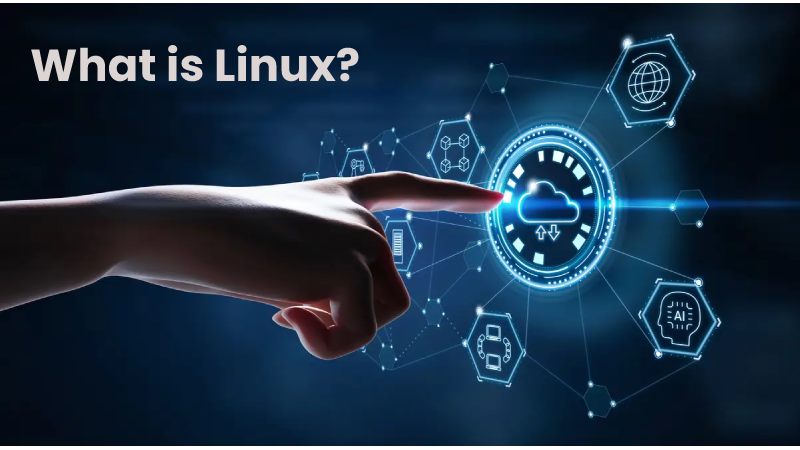The Linux Concept
IT systems and workloads are getting more complex; the underpinning armature and operating system must be performance-driven, dependable, and flexible. Linux is the stable foundation for all traditional and innovative IT workloads and deployments in any terrain, whether devoted, virtual, pall, or containerized.
Table of Contents
What is Linux?
Linux is an open-source operating system. In 1991, Linus Torvalds designed and created it as a hobbyhorse. That hobbyhorse came the operating system with the most expansive stoner base, the most used on intimately available Internet waiters, and the only one used on the 500 fastest supercomputers. While in council, Linus tried to produce a free, indispensable, open-source interpretation of the MINIX operating system, which remained grounded on Unix principles and design.

Maybe the stylish thing about Linux is that it’s open source. It remains released under the GNU General Public License( GPL), which means anyone can run, study, partake and modify the software system. Modified law can also be redistributed and indeed vended, but all of this must remain done under the same license. One of the main differences from traditional operating systems( for illustration, Unix and Windows) is that they are personal, locked down, distributed as-is, and can not be changed.
What Can Remain Done With Linux?
Linux serves as the foundation for nearly any IT action, including holders, operations erected in the pall, and security. It’s an essential element of some of the world’s largest diligence and companies, from information-participating websites( similar to Wikipedia and the New York Stock Exchange) to mobile bias running Android. ( distribution of the Linux kernel for particular use with companion software). Over time, Linux has become the standard for running largely available, dependable, and charge-critical workloads in data centre and pall deployments. It has numerous use cases, features, distributions, bias, and target systems and remains grounded on stoner requirements and workloads. The Linux Concept
Microsoft has enfolded Linux and open source in other ways. For illustration, it erected a SQL Garçon for Linux. It made its. The NET frame(. NET Core/ Mono) is available to everyone so that any platform can run it, and Linux inventors can make operations on top of it. By 2027, all SAP guests will resettle to SAP HANA, an in-memory relational database operation system that only runs on Linux. As of 2017, 50 of the SAP request was Windows guests.
For the pall, including Microsoft’s Azure, further, than 60 of the images in the Azure Marketplace and nearly a third of the virtual machines are grounded on Linux. On the other hand, Amazon Web Services and Google Cloud Platform offer colorful Linux distributions in their intimately available images.
Linux continues to be the working system of the future, and more and more systems depend on its stability and extensibility.
Is it Easy To Use Linux?
GUIs revolutionized computing during the operating system wars of the late 1970s, transubstantiating software systems into more pleasurable, visual, and abecedarian technology. Using Linux is extremely simple. nearly all its distributions include a graphical stoner interface( GUI) that facilitates interactive conduct. The Linux Concept

Hollywood’s representation of the command line, an essential element of open source operating systems, makes it feel insolvable to master. still, at some point, you may need to ask the computer to perform some task that remains not included in the predefined set of conduct that a GUI can perform. When that happens, you will need to open up the command line. The particles of law where tech geniuses frenetically type in pictures and television shows.
The command line is the most straightforward piece of calculating to use. Like our rearmost Red Hat Enterprise Linux release, some Linux distributions make using open source operating systems indeed more unequivocal.
Is Red Hat the same as Linux?
Red Hat’s early success was due to the company’s support for a custom distribution of Linux called Red Hat Linux. Due to the growth and trustability of that distribution, numerous people believe that Red Hat and Linux are synonymous. Since those early days, Red Hat results and technologies have been designed with this success. And have included nearly every aspect of the IT mound.
The company coordinates, protect, and supports Linux distribution, now known as Red Hat Enterprise Linux; the change took place in 2003 due to the junction with the Linux Fedora Project. moment, Red Hat Enterprise Linux powers. And supports software systems and technologies for robotization, pall, holders, middleware, storehouse, operation development, microservices, virtualization, operation, etc.
Linux plays a critical part as it’s the most important element of numerous of Red Hat’s immolations. Not only is it an operating system for waiters, it’s also the foundation of the ultramodern IT mound.
Can Linux be trusted? Is it safe?
Security isn’t commodity that can remian enforced formerly and left before. But should be part of the business and its perpetuation strategy.
Conclusions
What’s Linux on a computer? Linux is a free, open source operating system released under the GNU General Public License( GPL). Anyone can run, study, modify, or redistribute the source law and vend clones of your modified law. As long as they do so under the same license. The Linux Concept
